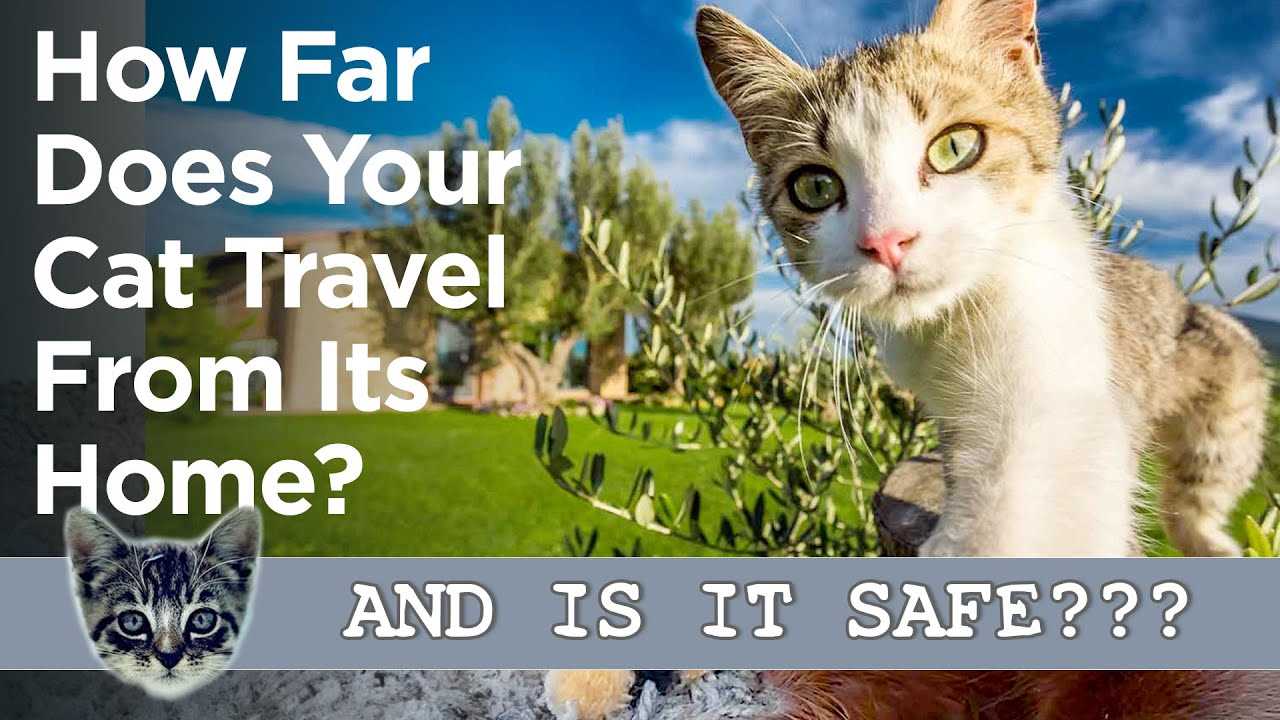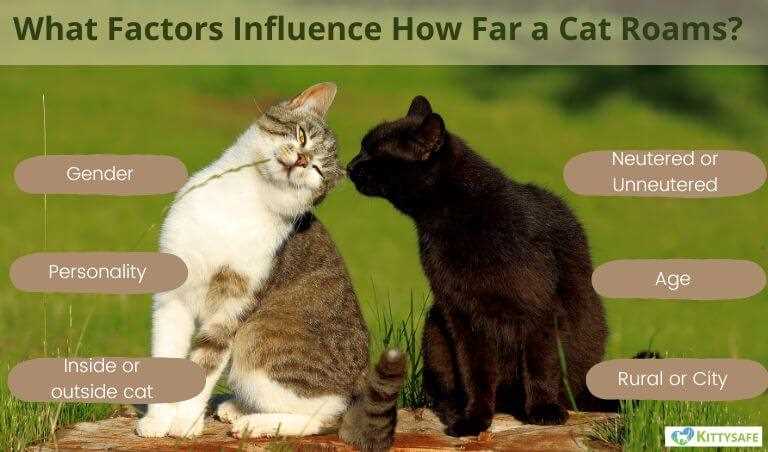As an 8-year-old Scottish Fold, I’ve ventured beyond my comfy corner more than a few times. Interestingly, the furthest I’ve roamed is around a mile from my favorite sunny spot. This distance is typical for many feline adventurers like me, but each kitty has its own comfort zone.
Research shows that many of us prefer to stay within familiar territories, usually ranging from 300 to 1,500 feet from where we hang our tails. Factors like food availability, safety, and the presence of other pets influence how far we wander. It’s crucial for pet parents to keep an eye on us and ensure we feel secure in our surroundings.
Some daring souls might stray even farther, especially if they’re not spayed or neutered, driven by the urge to find a mate. However, it’s vital to remember that safety first! Keeping us indoors or in safe outdoor enclosures can prevent unwanted escapades and ensure our well-being.
Distance Exploration

As an adventurous Scottish Fold, I’ve roamed around my neighborhood and discovered some fascinating distances. On average, I’ve wandered up to a quarter mile away. This range varies depending on factors like the environment and my mood. Familiar areas seem more inviting, while new spots spark my curiosity.
Environmental Influences
Urban settings often limit my escapades due to busy streets and human activity. In quieter suburban regions, I’m more inclined to venture farther, sometimes even reaching half a mile. Each excursion is a balancing act between safety and the thrill of exploration.
Behavioral Patterns
My fellow feline friends and I tend to follow specific routes. We often retrace familiar paths as we mark our territory or search for food. So, while I may roam a good distance, I’ll always return to my favorite spots, especially when it’s time for a snack!
Factors Influencing a Cat’s Travel Distance

When it comes to wandering, several elements play a role in how far I might roam. One significant factor is the environment. Urban settings often present more obstacles and distractions, while rural areas can allow for longer explorations due to fewer barriers.
Territory Marking

Another aspect is territory. I instinctively want to mark my domain, which can push me to venture further if I sense competition or new scents. My natural instincts drive me to explore areas where I can establish or reinforce my territory.
Social Interaction
Social dynamics also matter. Encounters with other animals can influence my distance. If I meet a friendly neighbor or a rival, my path might change significantly. Familiarity with the neighborhood can make me feel safe enough to wander further, while new surroundings might keep me closer to familiar spots.
Understanding Cat Navigation and Territory Exploration
Felines possess remarkable instincts that guide them in their surroundings. Utilizing a combination of scent, sight, and memory, they establish mental maps of their environment. This ability allows them to return to familiar places with ease.
Landmarks and Scent Marking
Key elements in a kitty’s exploration include recognizable landmarks and scent trails. They often rely on distinctive features like trees, fences, or unique buildings to orient themselves. Additionally, by leaving scent marks through rubbing or scratching, they communicate with other neighborhood pets, reinforcing their territory.
Influence of Social Dynamics
Interactions with other animals can significantly affect their roaming habits. Social felines may venture further to establish dominance or find companions. Conversely, more timid individuals might stick closer to familiar grounds. Understanding these dynamics can help pet owners manage their furry friends’ excursions safely.
For those concerned about health issues, it’s essential to know how to treat tapeworm in cats if any symptoms arise. Also, consider the dietary choices; I often hear questions about whether cats can eat milk bones, which is something to think about when planning meals for your adventurous pet.
FAQ:
How far can a domestic cat typically travel from home?
Domestic cats usually have a range of about 1 to 5 miles from their home, depending on various factors such as their environment, personality, and whether they have been spayed or neutered. Some adventurous cats may wander further, but this is less common.
What factors influence how far a cat might roam away from home?
Several factors can affect a cat’s roaming distance. These include their age, sex, whether they are spayed or neutered, and their natural instincts. Outdoor access, the availability of food sources, and the presence of other cats or territorial boundaries in the area also play significant roles in how far a cat might travel.
Is it safe for cats to roam far from home?
While cats are naturally curious and enjoy exploring, roaming far from home can expose them to dangers like traffic, predators, and diseases. To ensure their safety, many owners choose to keep their cats indoors or provide a secure outdoor enclosure. If a cat roams frequently, it’s essential to monitor their health and behavior closely.
How can I encourage my cat to stay closer to home?
To help your cat stay close, consider creating a stimulating environment indoors with toys, scratching posts, and climbing structures. Engaging them in playtime and providing a secure outdoor space like a catio can satisfy their curiosity while keeping them safe. Additionally, regular feeding schedules can encourage your cat to remain nearby.
As an 8-year-old Scottish Fold, I’ve ventured beyond my comfy corner more than a few times. Interestingly, the furthest I’ve roamed is around a mile from my favorite sunny spot. This distance is typical for many feline adventurers like me, but each kitty has its own comfort zone.
Research shows that many of us prefer to stay within familiar territories, usually ranging from 300 to 1,500 feet from where we hang our tails. Factors like food availability, safety, and the presence of other pets influence how far we wander. It’s crucial for pet parents to keep an eye on us and ensure we feel secure in our surroundings.
Some daring souls might stray even farther, especially if they’re not spayed or neutered, driven by the urge to find a mate. However, it’s vital to remember that safety first! Keeping us indoors or in safe outdoor enclosures can prevent unwanted escapades and ensure our well-being.
Distance Exploration

As an adventurous Scottish Fold, I’ve roamed around my neighborhood and discovered some fascinating distances. On average, I’ve wandered up to a quarter mile away. This range varies depending on factors like the environment and my mood. Familiar areas seem more inviting, while new spots spark my curiosity.
Environmental Influences
Urban settings often limit my escapades due to busy streets and human activity. In quieter suburban regions, I’m more inclined to venture farther, sometimes even reaching half a mile. Each excursion is a balancing act between safety and the thrill of exploration.
Behavioral Patterns
My fellow feline friends and I tend to follow specific routes. We often retrace familiar paths as we mark our territory or search for food. So, while I may roam a good distance, I’ll always return to my favorite spots, especially when it’s time for a snack!
Factors Influencing a Cat’s Travel Distance

When it comes to wandering, several elements play a role in how far I might roam. One significant factor is the environment. Urban settings often present more obstacles and distractions, while rural areas can allow for longer explorations due to fewer barriers.
Territory Marking

Another aspect is territory. I instinctively want to mark my domain, which can push me to venture further if I sense competition or new scents. My natural instincts drive me to explore areas where I can establish or reinforce my territory.
Social Interaction
Social dynamics also matter. Encounters with other animals can influence my distance. If I meet a friendly neighbor or a rival, my path might change significantly. Familiarity with the neighborhood can make me feel safe enough to wander further, while new surroundings might keep me closer to familiar spots.
Understanding Cat Navigation and Territory Exploration
Felines possess remarkable instincts that guide them in their surroundings. Utilizing a combination of scent, sight, and memory, they establish mental maps of their environment. This ability allows them to return to familiar places with ease.
Landmarks and Scent Marking
Key elements in a kitty’s exploration include recognizable landmarks and scent trails. They often rely on distinctive features like trees, fences, or unique buildings to orient themselves. Additionally, by leaving scent marks through rubbing or scratching, they communicate with other neighborhood pets, reinforcing their territory.
Influence of Social Dynamics
Interactions with other animals can significantly affect their roaming habits. Social felines may venture further to establish dominance or find companions. Conversely, more timid individuals might stick closer to familiar grounds. Understanding these dynamics can help pet owners manage their furry friends’ excursions safely.
For those concerned about health issues, it’s essential to know how to treat tapeworm in cats if any symptoms arise. Also, consider the dietary choices; I often hear questions about whether cats can eat milk bones, which is something to think about when planning meals for your adventurous pet.
FAQ:
How far can a domestic cat typically travel from home?
Domestic cats usually have a range of about 1 to 5 miles from their home, depending on various factors such as their environment, personality, and whether they have been spayed or neutered. Some adventurous cats may wander further, but this is less common.
What factors influence how far a cat might roam away from home?
Several factors can affect a cat’s roaming distance. These include their age, sex, whether they are spayed or neutered, and their natural instincts. Outdoor access, the availability of food sources, and the presence of other cats or territorial boundaries in the area also play significant roles in how far a cat might travel.
Is it safe for cats to roam far from home?
While cats are naturally curious and enjoy exploring, roaming far from home can expose them to dangers like traffic, predators, and diseases. To ensure their safety, many owners choose to keep their cats indoors or provide a secure outdoor enclosure. If a cat roams frequently, it’s essential to monitor their health and behavior closely.
How can I encourage my cat to stay closer to home?
To help your cat stay close, consider creating a stimulating environment indoors with toys, scratching posts, and climbing structures. Engaging them in playtime and providing a secure outdoor space like a catio can satisfy their curiosity while keeping them safe. Additionally, regular feeding schedules can encourage your cat to remain nearby.
As an 8-year-old Scottish Fold, I’ve ventured beyond my comfy corner more than a few times. Interestingly, the furthest I’ve roamed is around a mile from my favorite sunny spot. This distance is typical for many feline adventurers like me, but each kitty has its own comfort zone.
Research shows that many of us prefer to stay within familiar territories, usually ranging from 300 to 1,500 feet from where we hang our tails. Factors like food availability, safety, and the presence of other pets influence how far we wander. It’s crucial for pet parents to keep an eye on us and ensure we feel secure in our surroundings.
Some daring souls might stray even farther, especially if they’re not spayed or neutered, driven by the urge to find a mate. However, it’s vital to remember that safety first! Keeping us indoors or in safe outdoor enclosures can prevent unwanted escapades and ensure our well-being.
Distance Exploration

As an adventurous Scottish Fold, I’ve roamed around my neighborhood and discovered some fascinating distances. On average, I’ve wandered up to a quarter mile away. This range varies depending on factors like the environment and my mood. Familiar areas seem more inviting, while new spots spark my curiosity.
Environmental Influences
Urban settings often limit my escapades due to busy streets and human activity. In quieter suburban regions, I’m more inclined to venture farther, sometimes even reaching half a mile. Each excursion is a balancing act between safety and the thrill of exploration.
Behavioral Patterns
My fellow feline friends and I tend to follow specific routes. We often retrace familiar paths as we mark our territory or search for food. So, while I may roam a good distance, I’ll always return to my favorite spots, especially when it’s time for a snack!
Factors Influencing a Cat’s Travel Distance

When it comes to wandering, several elements play a role in how far I might roam. One significant factor is the environment. Urban settings often present more obstacles and distractions, while rural areas can allow for longer explorations due to fewer barriers.
Territory Marking

Another aspect is territory. I instinctively want to mark my domain, which can push me to venture further if I sense competition or new scents. My natural instincts drive me to explore areas where I can establish or reinforce my territory.
Social Interaction
Social dynamics also matter. Encounters with other animals can influence my distance. If I meet a friendly neighbor or a rival, my path might change significantly. Familiarity with the neighborhood can make me feel safe enough to wander further, while new surroundings might keep me closer to familiar spots.
Understanding Cat Navigation and Territory Exploration
Felines possess remarkable instincts that guide them in their surroundings. Utilizing a combination of scent, sight, and memory, they establish mental maps of their environment. This ability allows them to return to familiar places with ease.
Landmarks and Scent Marking
Key elements in a kitty’s exploration include recognizable landmarks and scent trails. They often rely on distinctive features like trees, fences, or unique buildings to orient themselves. Additionally, by leaving scent marks through rubbing or scratching, they communicate with other neighborhood pets, reinforcing their territory.
Influence of Social Dynamics
Interactions with other animals can significantly affect their roaming habits. Social felines may venture further to establish dominance or find companions. Conversely, more timid individuals might stick closer to familiar grounds. Understanding these dynamics can help pet owners manage their furry friends’ excursions safely.
For those concerned about health issues, it’s essential to know how to treat tapeworm in cats if any symptoms arise. Also, consider the dietary choices; I often hear questions about whether cats can eat milk bones, which is something to think about when planning meals for your adventurous pet.
FAQ:
How far can a domestic cat typically travel from home?
Domestic cats usually have a range of about 1 to 5 miles from their home, depending on various factors such as their environment, personality, and whether they have been spayed or neutered. Some adventurous cats may wander further, but this is less common.
What factors influence how far a cat might roam away from home?
Several factors can affect a cat’s roaming distance. These include their age, sex, whether they are spayed or neutered, and their natural instincts. Outdoor access, the availability of food sources, and the presence of other cats or territorial boundaries in the area also play significant roles in how far a cat might travel.
Is it safe for cats to roam far from home?
While cats are naturally curious and enjoy exploring, roaming far from home can expose them to dangers like traffic, predators, and diseases. To ensure their safety, many owners choose to keep their cats indoors or provide a secure outdoor enclosure. If a cat roams frequently, it’s essential to monitor their health and behavior closely.
How can I encourage my cat to stay closer to home?
To help your cat stay close, consider creating a stimulating environment indoors with toys, scratching posts, and climbing structures. Engaging them in playtime and providing a secure outdoor space like a catio can satisfy their curiosity while keeping them safe. Additionally, regular feeding schedules can encourage your cat to remain nearby.






